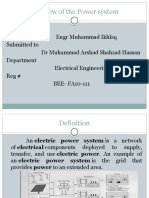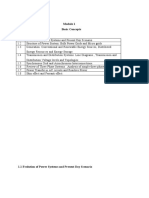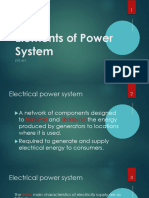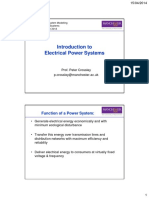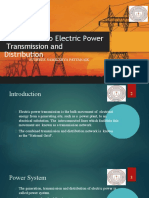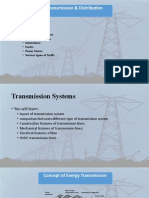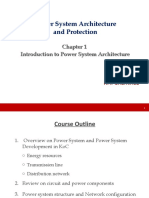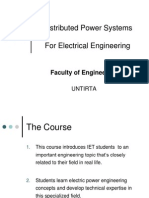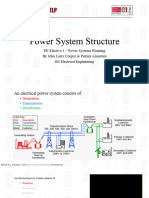0% found this document useful (0 votes)
79 views47 pagesLecture 1-Power System Components
The document provides an overview of electric power systems, emphasizing their importance in modern life and the structure of power systems, which includes generation, transmission, and distribution components. It discusses various sources of electrical power, both conventional and non-conventional, and highlights the advantages of high-voltage transmission to minimize losses. Additionally, it explains the types of loads in power systems and the significance of demand and load duration curves in electricity generation and distribution.
Uploaded by
Dylan NgoieCopyright
© © All Rights Reserved
We take content rights seriously. If you suspect this is your content, claim it here.
Available Formats
Download as PDF, TXT or read online on Scribd
0% found this document useful (0 votes)
79 views47 pagesLecture 1-Power System Components
The document provides an overview of electric power systems, emphasizing their importance in modern life and the structure of power systems, which includes generation, transmission, and distribution components. It discusses various sources of electrical power, both conventional and non-conventional, and highlights the advantages of high-voltage transmission to minimize losses. Additionally, it explains the types of loads in power systems and the significance of demand and load duration curves in electricity generation and distribution.
Uploaded by
Dylan NgoieCopyright
© © All Rights Reserved
We take content rights seriously. If you suspect this is your content, claim it here.
Available Formats
Download as PDF, TXT or read online on Scribd
/ 47
